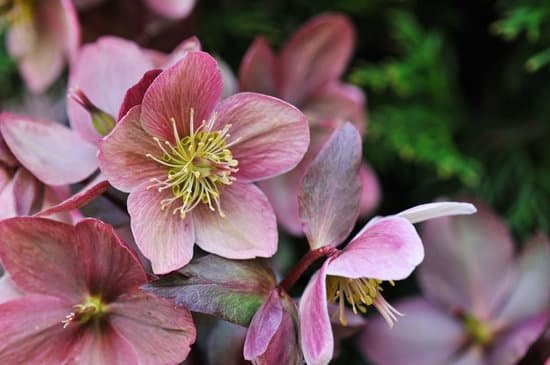As March rolls in, it brings with it the promise of warmer days and blooming flowers, marking the official start of the spring season. This is the perfect time to embrace the renewal and growth that comes with this time of year, especially when it comes to gardening. From preparing your garden space to planting seeds and caring for your plants, there are plenty of DIY ideas to explore as you welcome in the spring.
One of the most exciting aspects of March is the opportunity to get your hands dirty and immerse yourself in DIY gardening projects. Whether you’re a seasoned gardener or a beginner looking to try your hand at cultivating some greenery, there’s something special about tending to your own garden during this time of year. With a focus on growth and new beginnings, March provides a canvas for creating beautiful outdoor spaces that will flourish throughout the coming months.
From planning out your garden layout to starting seeds indoors, there are endless possibilities for creativity and productivity in your gardening endeavors this March. As you embark on this journey, consider exploring upcycled garden decor ideas and involving children in fun DIY projects that will not only enhance your outdoor space but also create lasting memories.
With proper maintenance and care, your spring garden will thrive throughout March and beyond, providing you with fresh produce and vibrant blooms as a reward for your hard work.
Benefits of DIY Gardening in March
March is a wonderful time to embrace the changing season and dive into DIY gardening projects. As the cold winter months fade away, gardeners are eager to get their hands dirty and start preparing their outdoor spaces for spring. There are numerous benefits to starting your gardening journey in March, from the sense of accomplishment you’ll feel watching your plants grow, to the physical and mental health benefits of spending time outdoors.
Here are some reasons why March is the perfect time to kick off your DIY gardening endeavors:
- The weather is getting warmer: With the arrival of spring, temperatures are on the rise, creating ideal conditions for planting a variety of flowers, fruits, and vegetables.
- Longer daylight hours: As the days get longer, you’ll have more time to spend in your garden working on projects and tending to your plants.
- Preparation for a bountiful season: By starting your garden in March, you’ll give your plants plenty of time to establish healthy root systems and thrive throughout the spring and summer months.
Don’t miss out on the opportunity to enjoy all the benefits that come with DIY gardening in March. Whether you’re a seasoned gardener or just starting out, this is the perfect time to get outside, connect with nature, and cultivate a beautiful outdoor space. Get ready to roll up your sleeves and bring your garden dreams to life this spring.
Planning Your Spring Garden
March marks the beginning of the spring season, bringing with it a renewed sense of growth and vitality in the garden. As the days get longer and the weather starts to warm up, it’s the perfect time to start planning your spring garden. Whether you’re a seasoned gardener or just beginning your green thumb journey, there are plenty of DIY ideas for gardening to explore this month.
To make the most of your gardening space in March, it’s essential to start by mapping out your garden. Consider factors such as sunlight exposure, soil quality, and water drainage when deciding where to plant different types of flowers, herbs, vegetables, or fruits. Creating a detailed layout will help you make efficient use of space and ensure that your plants thrive throughout the season.
Here are some tips for mapping out your gardening space in March:
- Take note of areas that receive full sun, partial shade, or full shade throughout the day.
- Consider grouping plants with similar water requirements together to simplify watering tasks.
- Plan for easy access pathways between planting beds to facilitate maintenance and harvesting.
By carefully planning your spring garden layout in March, you can set yourself up for a successful growing season ahead. Remember that flexibility is key – be open to adjusting your plan as needed based on how your plants respond to their environment. With proper preparation and organization, you can create a beautiful and productive garden that brings joy throughout the spring months.
DIY Seed Starting
March is the perfect time to kick off your gardening journey by starting seeds indoors. This allows you to get a head start on the growing season and ensures that your plants are ready to be transplanted into your garden once the weather warms up. DIY seed starting is not only cost-effective but also gives you a sense of pride and accomplishment as you watch your seeds grow into vibrant plants.
Choosing the Right Seeds
When it comes to seed starting, it’s important to choose seeds that are suitable for the current season and climate. Look for varieties that thrive in early spring conditions and consider factors such as sunlight requirements, soil preferences, and space needed for growth. Additionally, opt for high-quality seeds from reputable suppliers to increase your chances of successful germination and healthy plant development.
Creating a Seed Starting Setup
To kick off your gardening journey with seeds, you’ll need a dedicated seed starting setup. This can range from simple trays with cell inserts to more elaborate setups with grow lights and heating mats. Choose a well-lit area in your home for your seed starting station, ensuring that seeds receive adequate light, warmth, and moisture for optimal growth. Remember to label your seed trays or pots to keep track of different varieties.
Caring for Your Seedlings
Once your seeds have germinated and sprouted into seedlings, it’s crucial to provide them with proper care to promote healthy growth. Keep an eye on moisture levels in the soil, making sure not to overwater or underwater your seedlings. Monitor temperature fluctuations and adjust lighting as needed to prevent leggy growth.
As your seedlings mature, gradually acclimate them to outdoor conditions by hardening them off before transplanting them into the garden. By following these steps, you can successfully kick off your gardening journey with seeds this March and enjoy a bountiful harvest later in the season.
Upcycled Garden Decor
When it comes to sprucing up your garden this March, why not get creative with upcycled garden decor? Not only is repurposing items good for the environment, but it can also add a unique and personal touch to your outdoor space. Here are some creative ways to breathe new life into old items for your garden:
Repurposed Planters
Instead of buying new planters for your garden, consider using items you already have lying around the house. Old teapots, tin cans, or even wooden crates can make charming and eclectic plant containers. Just be sure to drill drainage holes in the bottom if needed and fill them with soil suitable for the plants you want to grow.
DIY Garden Signs
Spruce up your garden with personalized signs made from upcycled materials. Use old wooden pallets, metal scraps, or even driftwood to create rustic and whimsical signs for labeling your plants or adding some inspiration to your outdoor sanctuary. Get creative with paint, stencils, and decorative embellishments to make them truly unique.
Repurposed Garden Furniture
Give new life to old furniture by repurposing them for your outdoor space. An old ladder can become a vertical garden display, while a vintage chair can be transformed into a charming plant stand. Look for items at thrift stores or garage sales that you can refurbish and use as functional pieces in your garden oasis.
By incorporating upcycled garden decor into your outdoor space this March, you not only add character and creativity but also contribute to sustainable living practices. Get ready to infuse your garden with personality while reducing waste and celebrating the beauty of DIY gardening in the spring season.
Spring Garden Maintenance
March is a time when the crisp air starts to warm up, signaling the arrival of the much-awaited spring season. This is the perfect time to start planning and prepping your garden for the abundance of growth and blooms that lie ahead. As the days get longer and the soil begins to thaw, it’s essential to tackle some key maintenance tasks to ensure that your garden thrives throughout March and beyond.
One of the first things you’ll want to do as part of your spring garden maintenance routine is cleaning up any debris that may have accumulated over the winter months. Remove dead leaves, branches, and any other items that could harbor pests or diseases.
This will help prevent any issues from spreading once your plants start growing again. Additionally, tidying up your garden beds will give you a clean slate to work with as you start planting new flowers or vegetables.
Another important task for March garden maintenance is assessing your hardscaping elements such as pathways, fences, and structures. Check for any damage caused by winter weather or wear and tear, and make any necessary repairs or replacements.
Ensuring that your hardscaping is in good condition not only enhances the overall look of your garden but also provides structural support for your plants as they grow. By addressing these maintenance tasks early on in March, you’ll set a solid foundation for a successful gardening season ahead.
As you continue with your spring garden maintenance routine in March, don’t forget to check on your tools and equipment. Sharpen blades, oil hinges, and replace any worn-out parts to ensure smooth operation throughout the season.
Keeping your gardening tools well-maintained will not only make your tasks easier but also extend their lifespan for years to come. With these essential tasks completed, you can look forward to seeing your garden thrive as the days get warmer and longer in March.
DIY Garden Projects for Kids
Engaging children in gardening activities during the spring can be a fun and educational experience for the whole family. Not only does it provide an opportunity for kids to learn about plants, flowers, and the environment, but it also encourages them to spend time outdoors and get their hands dirty. There are plenty of DIY garden projects that are perfect for kids of all ages, from simple plantings to more elaborate creations that they can be proud of.
One great way to involve kids in gardening is by creating a mini garden just for them. You can designate a small section of your backyard or balcony where they can plant their favorite flowers or vegetables.
Let them choose what they want to grow and assist them in preparing the soil, planting the seeds or seedlings, and watering their garden regularly. This not only teaches them responsibility but also gives them a sense of ownership over their little green space.
Another fun DIY project for kids is creating homemade plant markers. Using popsicle sticks, rocks, or even recycled materials like wine corks, children can get creative and design unique labels for each plant in the garden.
This activity not only helps kids remember what they’ve planted but also adds a personal touch to the garden space. Encouraging creativity and imagination through such projects can make gardening even more enjoyable for children as they watch their creations come to life in the springtime.
| DIY Garden Projects Ideas | Description |
|---|---|
| Mini Garden for Kids | Create a designated area where kids can plant their favorite flowers or vegetables. |
| Homemade Plant Markers | Use popsicle sticks, rocks, or recycled materials to create unique labels for each plant in the garden. |
Growing Your Own Produce
As the March spring season rolls around, many gardeners are eager to start planting fruits and vegetables in their gardens. Growing your own produce not only allows you to enjoy fresh, flavorful ingredients, but it also provides a sense of satisfaction and accomplishment. There are numerous options for what you can plant during this time of year, depending on your location and climate.
One popular choice for March planting is leafy greens such as lettuce, spinach, and kale. These cool-season vegetables thrive in the early spring weather and can be harvested for salads or sautés within just a few weeks. Root vegetables like carrots, radishes, and beets are also excellent choices for planting in March as they prefer the cooler temperatures of early spring.
If you have a bit more space in your garden, consider adding some fruit-bearing plants such as strawberries or blueberries. These plants may take longer to establish and bear fruit than vegetables, but the reward of freshly picked berries is well worth the wait. Additionally, herbs like mint, basil, and chives can be easily grown in pots or small garden plots to add flavor to your dishes throughout the season.
By incorporating a variety of fruits and vegetables into your spring garden, you can create a lush and bountiful space that will provide you with an abundance of fresh produce throughout the coming months. Whether you have a large backyard or just a small patio area for gardening, there are plenty of options for planting fruits and vegetables to suit your space and preferences.
Get ready to roll up your sleeves and get planting this March with these DIY ideas for growing your own produce.
Conclusion
As March ushers in the much-anticipated arrival of spring, DIY gardening enthusiasts eagerly prepare to embrace the beauty of nature blooming around them. The plethora of DIY ideas for gardening in March sets the stage for a season filled with creativity, growth, and abundance. Whether you are a seasoned gardener or just beginning your journey, this month offers a perfect opportunity to immerse yourself in the wonders of cultivating your own green haven.
The benefits of engaging in DIY gardening during March extend beyond just the beauty it adds to your surroundings. From boosting mental well-being to providing fresh produce for your table, getting your hands dirty in the soil can be immensely rewarding. This month is not only about planting seeds but also cultivating a sense of accomplishment as you witness the fruits of your labor blossoming before you.
As we celebrate the myriad March spring DIY ideas for gardening, let us revel in the joy of connecting with nature and nurturing life from seed to bloom. Whether you choose to upcycle materials for garden decor, involve children in fun garden projects, or focus on growing your own fruits and vegetables, each endeavor contributes to the tapestry of natural beauty that surrounds us.
With careful planning, dedication, and creativity, we look ahead to a bountiful season filled with flourishing gardens and endless possibilities. So grab your shovel and gloves – it’s time to make magic happen in your garden this spring.
Frequently Asked Questions
What Should I Do to My Garden in March?
In March, there are several tasks you can do to get your garden ready for the upcoming spring season. It’s a good time to start planting cool-weather crops like lettuce, peas, and carrots.
You can also prune any trees or shrubs before they start actively growing. Additionally, March is a great time to clean up any debris that has accumulated over the winter and prepare your soil for planting.
How Do I Prepare My Garden for the Next Spring?
To prepare your garden for the next spring, start by cleaning up any remaining debris from the previous season. You can also amend your soil by adding compost or other organic matter to improve its structure and fertility.
Planning out what plants you want to grow in the upcoming season is important so you can make any necessary arrangements for seeds or seedlings.
What Are Some Things That Need to Be Done in the Garden in the Spring?
There are several important tasks that need to be done in the garden during the spring months. This includes planting seeds or seedlings for vegetables, flowers, and herbs that thrive in warmer weather.
Spring is also a good time to fertilize your plants and do any necessary maintenance like weeding and mulching. Regular watering is essential as well to help support the new growth emerging in your garden during this season.

Welcome to my gardening blog! I am passionate about plants and enjoy sharing my knowledge and experiences with others. In this blog, I will write about everything related to gardening, from tips on how to get started to updates on my own garden projects.





